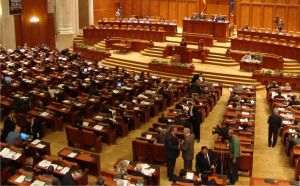• For the first time, investor demand for gold exceeds that of the jewelry sector • Price of gold: 2,300 USD by 2012
"Over the last ten years, gold has proven to be the best performing asset. Starting with 2001, its price increased almost five times; denominated in Euros, it has recorded an annual growth rate of approximately 13.5%. However, the rise in the price of gold is not yet perceived as sustainable. Following the purchases of gold made by the central banks of India, Saudi Arabia and China, central banks have become net buyers for the first time in the last 20 years", a study by "Erste Group" states.
Analysts consider that the latter represents a new stage of the bull market in gold: "As confidence n fiat money is constantly eroding, gold once again proves its stability, as it did over centuries. The best proof that the current price of gold is not the result of a speculative bubble is the comparison between the public debt and the gold held". According to "Erste", if only 10% of the public debt of the US were to be covered by gold, the price of gold should climb to 4,500 USD. Experts currently consider that the price of gold will near 2,300 USD/ounce, in the medium term. Its price expected to rise to 1,600 USD/ounce within a year.
• Gold is the perfect portfolio hedge
Demand for gold continues to increase, after reaching 1,270 tons in 2009. Exchange Traded Funds (ETFs) in particular rose significantly. As a result, analysts estimate that gold will increasingly hold more weight in asset allocation: "Gold is becoming increasingly tempting even for great hedge funds. Ir is often said that gold is the favorite investment for people preaching the end of the world, of pessimists and fear mongers who bet on the downfall of the financial system".
Ronald Stöferle, Gold Analyst at Erste Group, says: "It is often disregarded that gold is an excellent portfolio hedge, as it has behind it a history of thousands of years".
• Factors that support a rise in the price of gold:
- Gold and precious metals represent the only category of assets that keep their value in both inflationary and deflationary circumstances, in a sustainable manner.
- A rapid increase of gold output capacities is highly unlikely. An increase in output, energy costs and wages are just part of the factors that fully compensated the increase in the price of gold. Furthermore, the gold deposits which are easily exploitable are for the most part depleted, which means that the metal needs to be extracted from greater depth, causing an increase in production costs. That is why our scenario concerning the "maximum price of gold" remains intact.
- The fact that institutional investors, sovereign funds and oil producing countries still have little exposure to commodities and gold in particular, indicate investor demand could increase.
- The credit crisis is not over yet. Macroeconomic data from the US creates an ambivalent picture of the American economy, and the commercial real estate market is facing increasing problems. There has been talk about a return of the recession, which still poses a threat.



























































